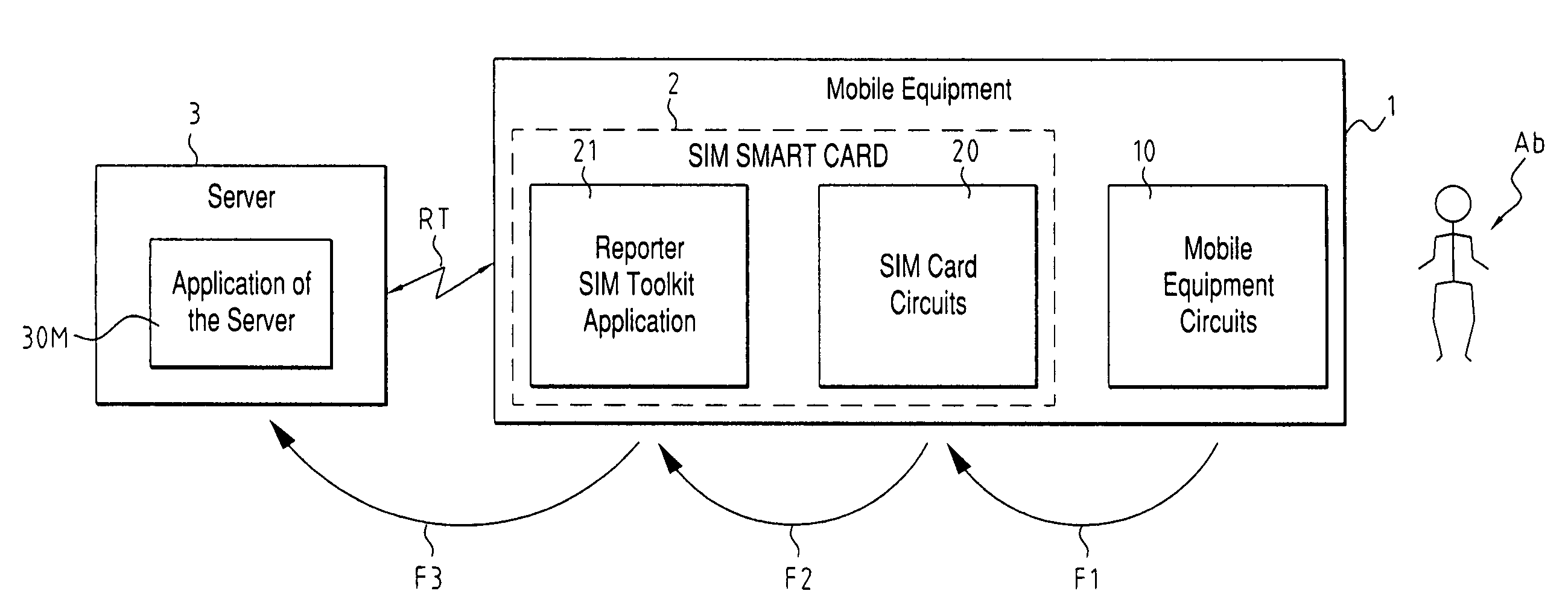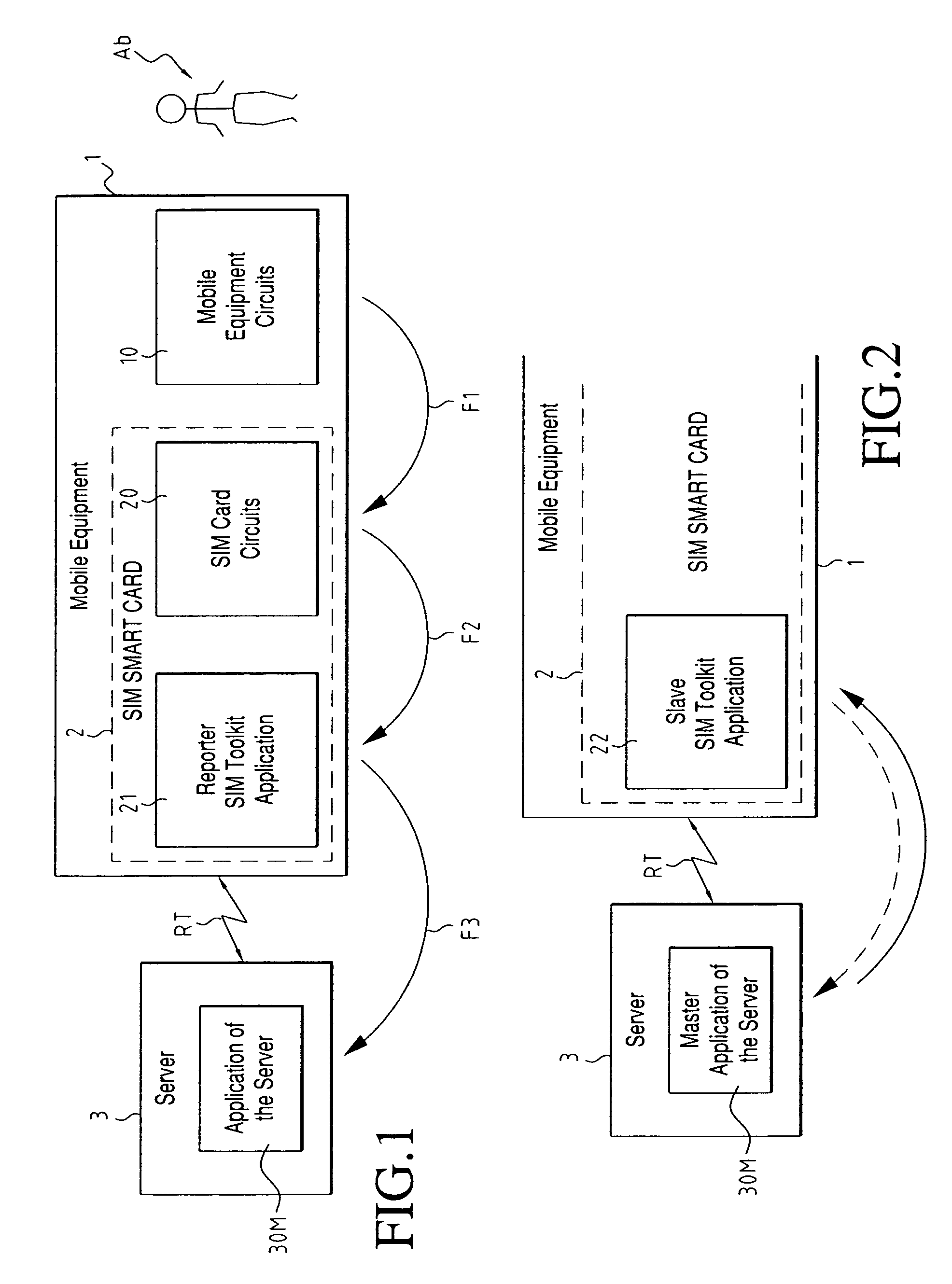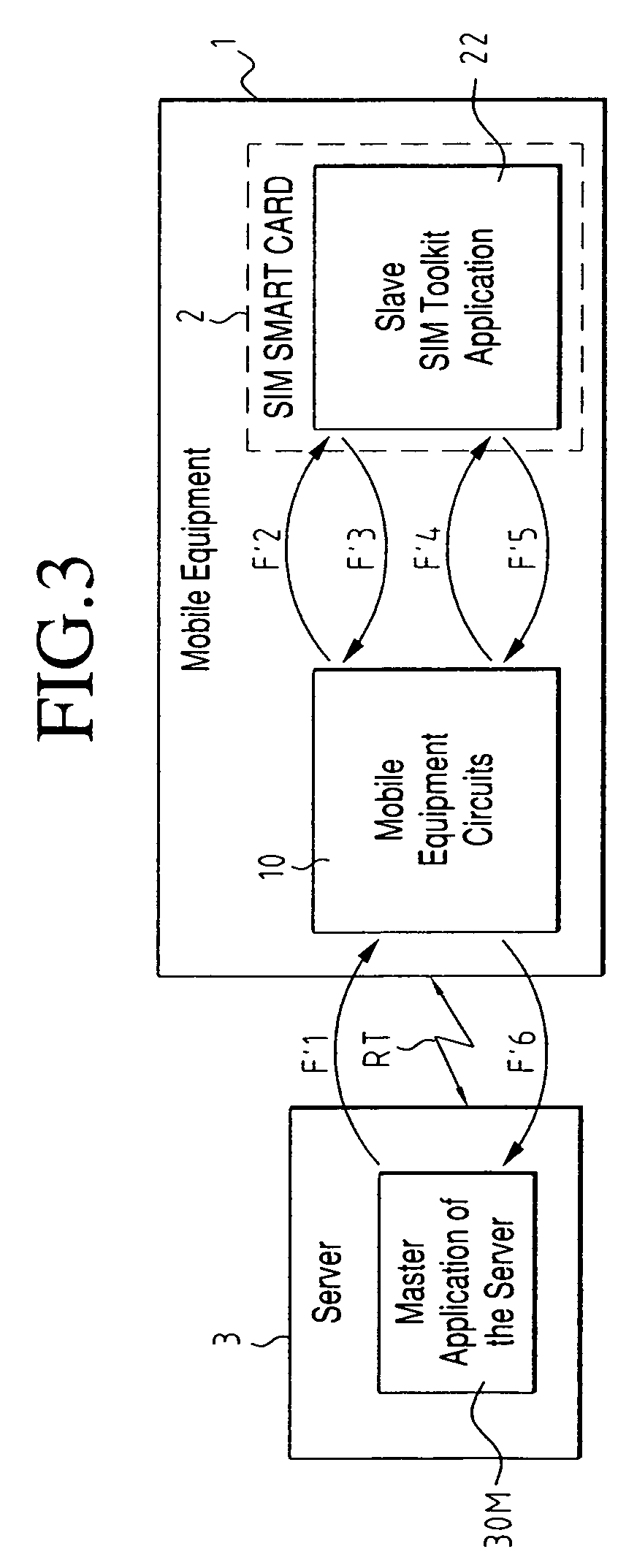Method for processing and transmitting data on a mobile telephone network and microchip onboard system
a mobile telephone network and microchip technology, applied in automatic exchanges, substation equipment, electrical appliances, etc., can solve the problems of reducing the number of services offered, affecting the quality of service, and affecting the service quality of the service, so as to achieve the effect of high processing speed, high level of service quality, and increased number of services
- Summary
- Abstract
- Description
- Claims
- Application Information
AI Technical Summary
Benefits of technology
Problems solved by technology
Method used
Image
Examples
Embodiment Construction
[0062]As indicated above, according to one of the characteristics of the invention, the execution of intensive operations, which in the prior art is performed in the SIM card, is delegated to applications implemented in one or more remote servers connected to the network.
[0063]According to another characteristic of the invention, two main categories of SIM Toolkit applications are provided, which will be called “Reporter SIM Toolkit Applications” and “Slave SIM Toolkit Applications,” respectively, both implemented in the SIM smart cards.
[0064]We will now describe both types of applications in greater detail.
[0065]Reporter SIM Toolkit Application
[0066]First of all, a SIM Toolkit application reacts to events coming from the mobile telephone, or more generally from the subscriber's mobile equipment. These events arrive in the SIM smart card in a command known as an “Envelope.” The “Envelope” command can contain, for example, the “Menu Selection” event, with the selection subscript bein...
PUM
 Login to View More
Login to View More Abstract
Description
Claims
Application Information
 Login to View More
Login to View More - R&D
- Intellectual Property
- Life Sciences
- Materials
- Tech Scout
- Unparalleled Data Quality
- Higher Quality Content
- 60% Fewer Hallucinations
Browse by: Latest US Patents, China's latest patents, Technical Efficacy Thesaurus, Application Domain, Technology Topic, Popular Technical Reports.
© 2025 PatSnap. All rights reserved.Legal|Privacy policy|Modern Slavery Act Transparency Statement|Sitemap|About US| Contact US: help@patsnap.com



